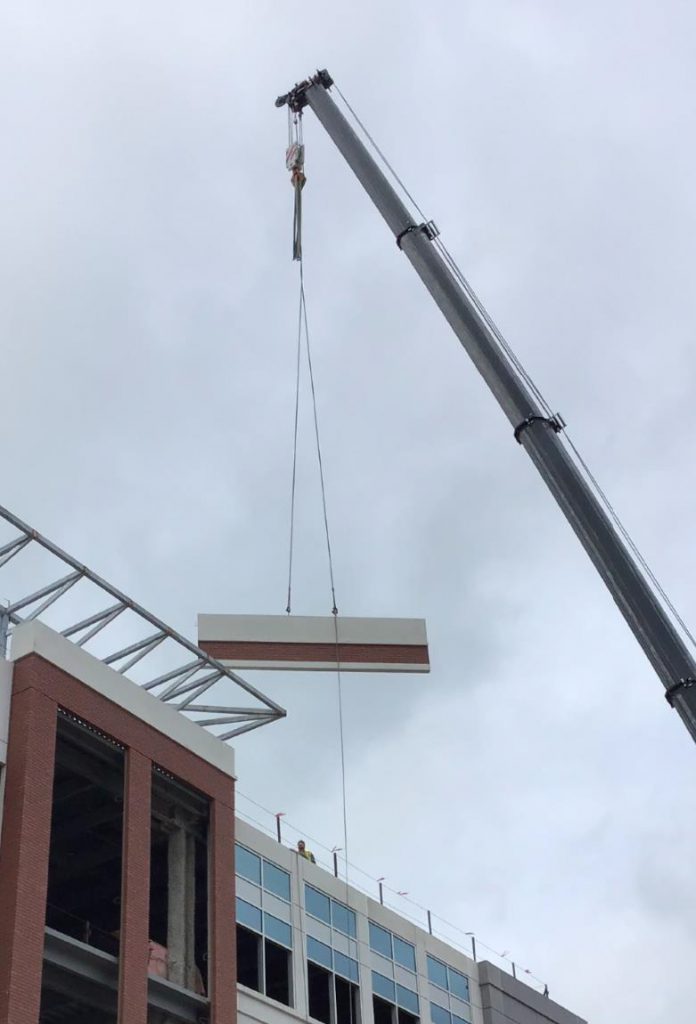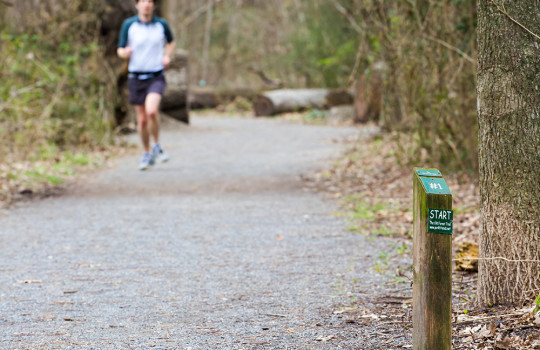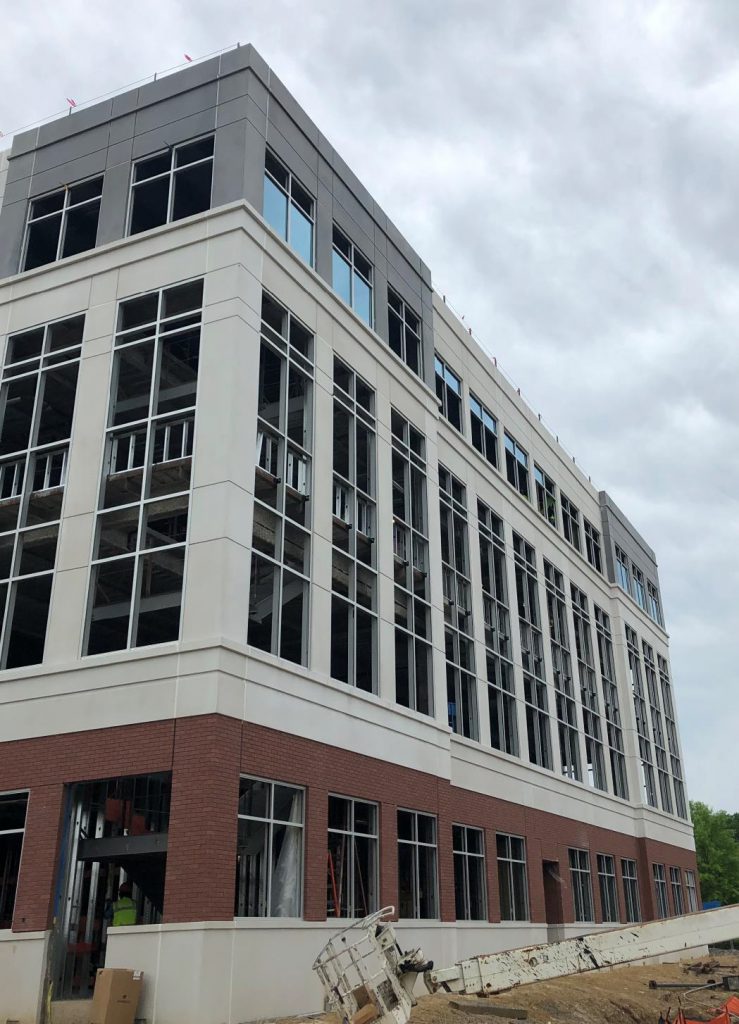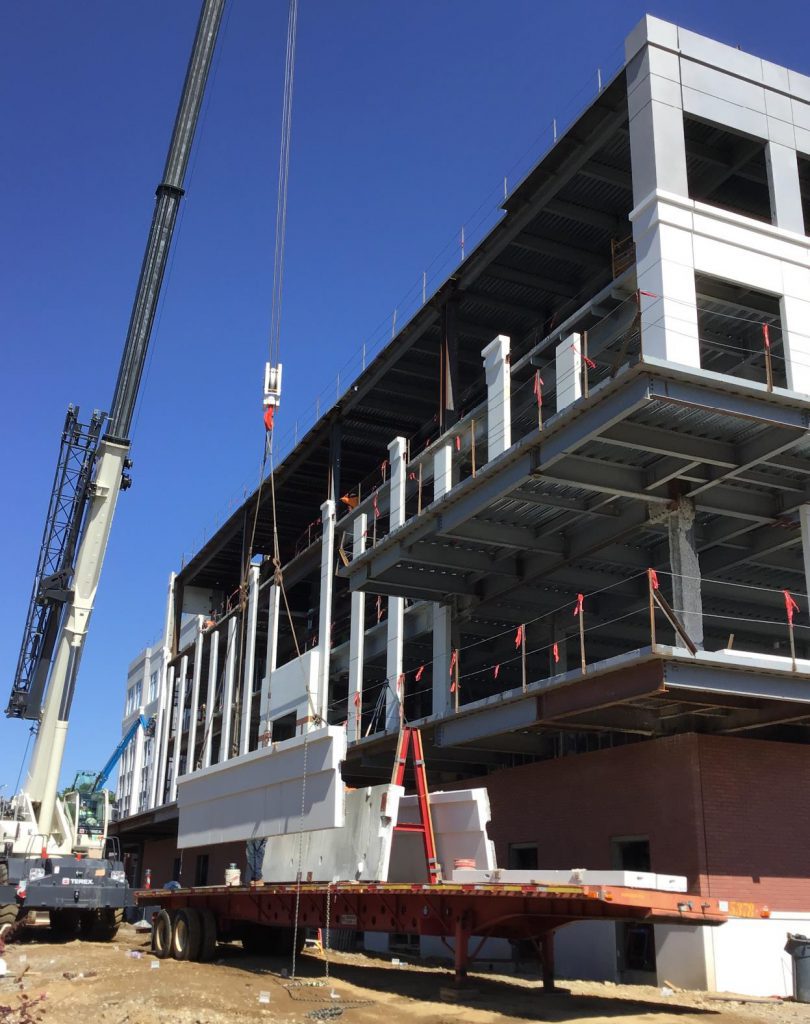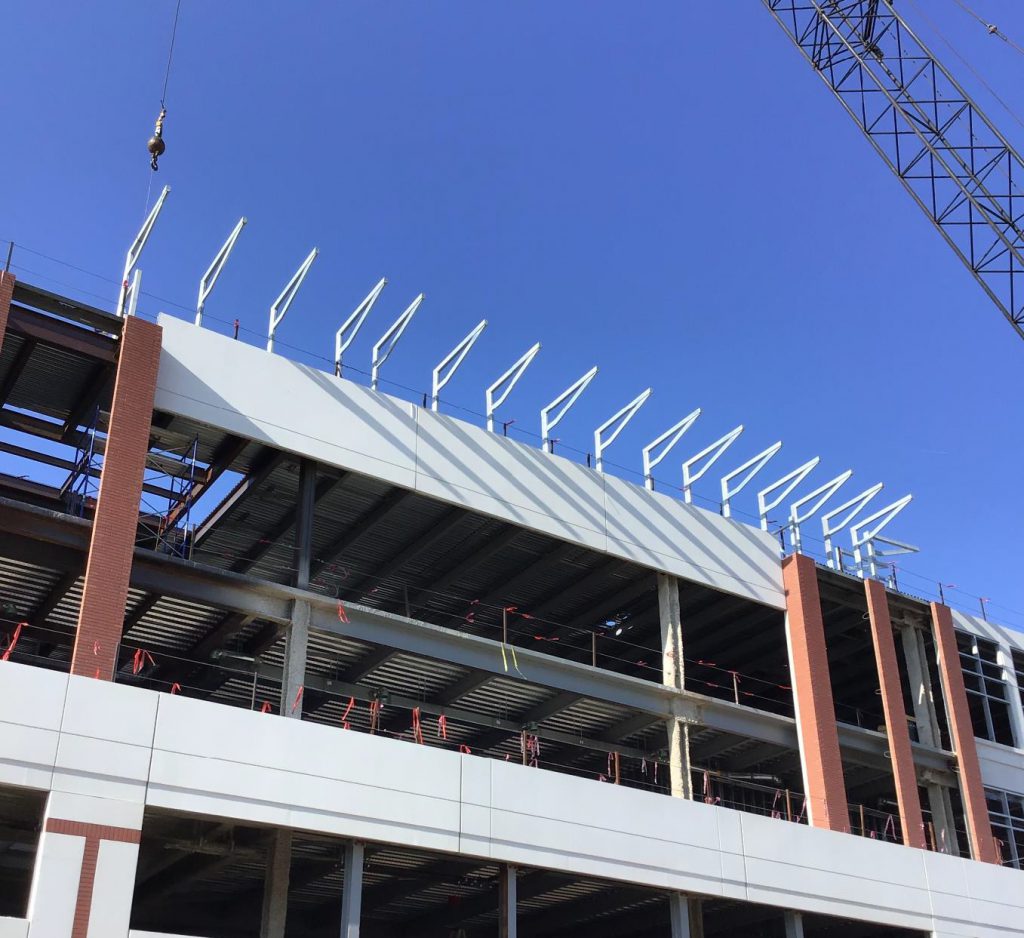Recovering from a knee injury can sometimes be a slow process. It can put a damper on your workout routine especially if your injury resulted from a routine workout or team sport. For those that were active prior to their knee injury, we know how difficult it can be to focus solely on recovery. While it’s important to be careful and take it easy during your recovery period, there are still safe and effective ways you can stay active.
What Exercise Can I Do With a Knee Injury?
There are a few ways to continue exercising as you recover from a knee injury. Options may include:
- Upper Body Strength Training
- Safe but Strenuous Activities
- Cardio Focused Training
Upper Body Strength Training
Maintaining your base fitness level is possible by exercising parts of your body that don’t heavily rely on your leg strength. Push-ups, pull-ups, planks, bicep curls, and sit-ups are all great exercises that work various upper body muscles. Seated upper body-focused machines are a nice alternative to free weights for those with a gym membership. While you can work your upper body through bicep curls and shoulder presses without engaging your knees, carrying around free weights can be dangerous for someone with a knee injury.
Safe but Strenuous Activities
Depending on the severity of your injury, you may also be able to participate in forms of exercise such as kayaking, bicycling, walking, or swimming while you are in recovery. Activities like swimming are low-impact and protect your joints, yet still offer a high calorie-burning workout. Before participating in any activities, you should always consult with your doctor to determine what exactly is safe for you to do.
Cardio Focused Training
While you’re in recovery from your knee injury, create a series of exercises that get your heart rate up without putting stress on your knee, especially if your knee injury was considered mild. Warm up with a 10-minute walk or swim, or try the following exercises a few times a week to stay in shape:
- Push-ups
- Bicycle crunches
- Side-lying leg raise (10 reps on each leg)
- Overhead dumbbell press
- Seated Russian twists
Even after you’re healed and cleared to work out at a normal pace, it’s important to ease back into your regular routine. Don’t be afraid to make modifications to certain exercises and make sure you stretch or foam roll after each workout.
How Can I Prevent Future Knee Injuries?
Strengthening your knees and the surrounding muscles is the most important thing for preventing future knee injuries. Once you have recovered from your initial injury, you can begin to focus on strengthening those muscles. Those with knee pain should aim to keep their lower body muscles strong and mobile because avoiding exercise altogether can weaken your lower body and cause even more pain in your knees. Professionals recommend focusing on single-leg exercises in order to ensure you aren’t compensating with your non-affected leg.
Contact Campbell Clinic
Before you do any exercise after an injury, it’s wise to get approval and recommendations from your physician. Schedule an appointment at Campbell Clinic to develop a safe workout plan for your knee recovery.
Construction Update: May 20, 2019WORK PERFORMED THIS WEEK:
- Shipped/staged/installed screen wall steel.
- Continued electrical overhead and in wall rough-in on the first and third floors. Continued underground feed for the generator power.
- Installed plumbing in wall and overhead rough-in on the first, second and third floors. Worked on rain leaders, wet columns and roof drains.
- Continued installation of high-pressure duct on the first and third floors. Worked on mechanical chases, RTUs and fourth floor main duct.
- Continued interior wall layout, erection of studs and installation of door frames on the first, third and fourth floors. Continued layout of the fourth floor.
- Continued working on screen wall.
- Continued spray foam insulation on exterior wall.
- Continued fireproofing the west and east half steel.
- Continued caulking between the precast.
- Continued installation of windows and window frames.
- Mobilized on-site roofing contractor and continued prep work on the roof.
- Installed ISO board.
- Began setting dumpster pad precast panels.
- Began working on retaining wall on the Campbell Clinic drive.
STATISTICS:
- The concrete that has been installed on the job-site so far comes out to be about 2,500 cubic yards. One cubic yard of concrete weighs approximately 4,050 pounds, which means the total weight of concrete installed on the job-site comes out to be roughly 10,125,000 pounds. This is enough concrete to fill 17 swimming pools, depending on the size.
- Once the job is complete, the electrical contractor (Gephart) will have installed approximately 500,000 linear feet of wire and 100,000 linear feet of conduit. Together, this is enough to cover over 113 miles, which is enough to run from the existing Campbell Clinic facility all the way to Pickwick Dam.
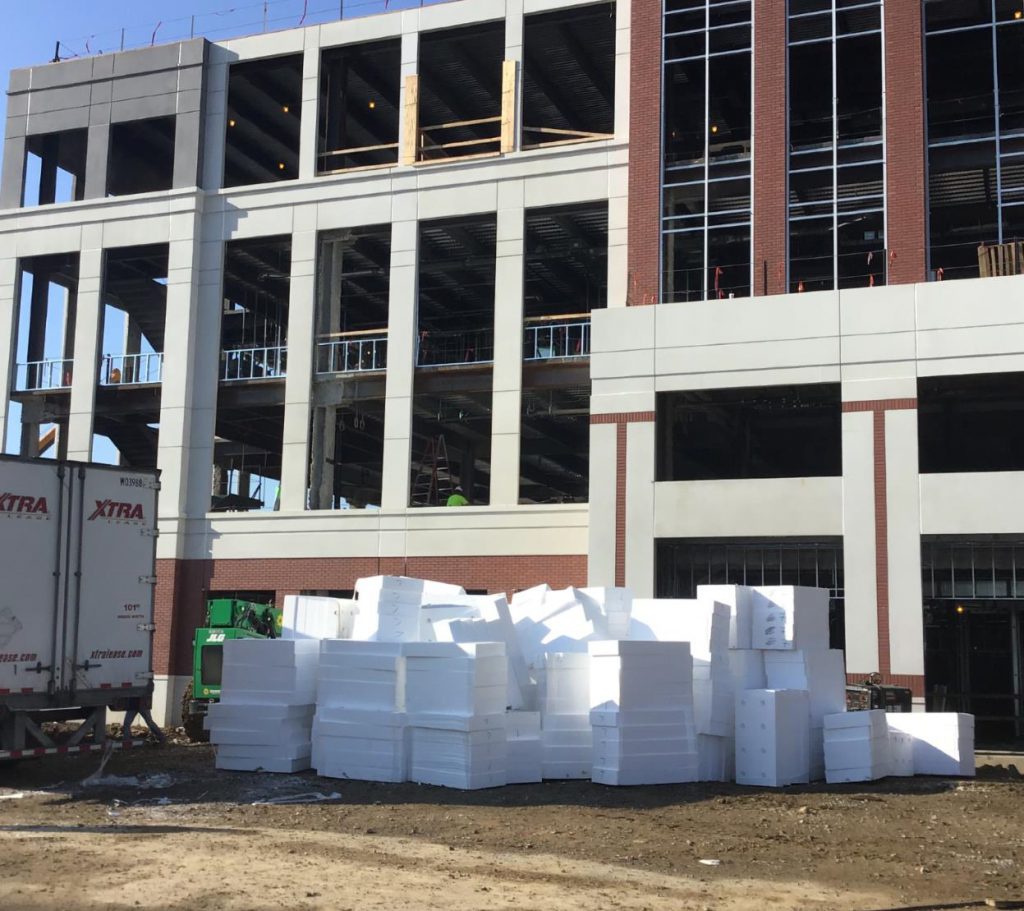
Sleep plays a vital role in your physical health. And getting enough sleep each night protects your body from both mental and physical health problems. We all know what it feels like to wake up energized after getting a full night of rest and equally understand what it feels like to function on a mere few hours of sleep. The way you feel while you’re awake is largely dependent upon what happens while you’re asleep.
During sleep, your body is working to support healthy brain function and maintain your physical health. For those who exercise regularly and put strain on their muscles, sleep helps support muscle recovery. While you may “feel fine” functioning on little sleep, that doesn’t mean your body does. Kids and teens on average need about 9.5 hours of sleep per night, while most adults need 7-9 hours of sleep a night. Many people think they will be able to catch up on sleep during the weekend, but if your sleep deficit is too high, this method will be ineffective. Without adequate sleep, you might feel sluggish, feel incapable of performing daily activities, and you may suffer from body aches and pains.
Rapid eye movement (REM) sleep accounts for 20-25% of total sleep time. REM sleep provides energy to your brain and restores the mind for waking hours. Non-REM sleep makes up 40% of total sleep time each night. This phase of the sleep cycle is essential for muscle recovery and repair. Your body is replenished with increased blood flow, while oxygen and nutrients are delivered to your muscles and tissues for healing and growth.
It’s true that getting enough sleep can help your muscles grow, but without enough sleep, muscle mass can actually decrease. This isn’t great news for those who participate in vigorous physical activity and skimp on a full night of rest. If you participate in physical activity on a daily or weekly basis, it’s important to prioritize your sleep schedule and set your body up well for a long life of being healthy and feeling well-rested.
If you’re experiencing lingering muscle pain, it may be due to a lack of sleep. Talk to a physician about your pain and schedule an appointment at Campbell Clinic today.
Construction Update: May 13, 2019WORK PERFORMED THIS WEEK:
- Detailed stair no. 2. Shipped, staged and installed screen wall steel.
- Continued electrical overhead and in-wall rough-in on the first and third floors. Continued underground feed for the generator power.
- Installed wall and overhead rough-in on the first, second and third floors. Worked on rain leaders and wet columns.
- Continued layout and installation of the high-pressure duct on the first and third floors.
- Worked on mechanical chases, RTUs and fourth-floor main duct.
- Continued interior wall layout, erection of studs and installation of door frames on the first, third and fourth floors. Continued layout of the fourth floor.
- Continued spray foam insulation on the exterior wall.
- Continued fireproofing the west and east half steel.
- Continued caulking between the precast.
- Continued installation of windows and window frames.
- Mobilized roofing contractor and began prep work on the roof.
- Began excavation for the dumpster pad footings.
STATISTICS:
- The concrete that has been installed on the job site so far comes out to be approximately 2,500 cubic yards. One cubic yard of concrete weighs around 4,050 pounds, which means the total weight of concrete installed on the job site is roughly 10,125,000 pounds. This is enough concrete to fill nearly 17 swimming pools, depending on the size.
- Once the job is complete, the electrical contractor (Gephart) will have installed approximately 500,000 linear feet of wire and 100,000 linear feet of conduit. Together, this is enough to cover more than 113 miles, which is enough to run from the existing Campbell Clinic all the way to the Pickwick Dam.
May is recognized each year as National Arthritis Awareness Month. Arthritis impacts more than 50 million Americans, making it the number one cause of disability in the country. Arthritis is often times chronic and can make even the most normal daily tasks painful. Thankfully, technology and scientific research are evolving more each day to conquer arthritis. It’s helpful to catch arthritis early and pay attention to any abnormalities or unusual changes to your body.
In light of National Arthritis Awareness Month, here a few ways you can identify arthritis and seek help to return to the normal routines of your daily life.
Early symptoms of arthritis
If you experience joint pain, loss of motion, fatigue, joint swelling, joint redness or similar symptoms, you might be experiencing arthritis. The two most common types of arthritis are osteoarthritis and rheumatoid arthritis. Both types impact your joints, but they cause damage in different ways. Osteoarthritis causes wear-and-tear to your joint’s cartilage, while rheumatoid arthritis manifests when your immune system attacks your body’s synovial membrane, a connective tissue that lines the inner surface of capsules of synovial joints. Over time, both of these types of arthritis, along with many other types, can progress if they are not properly addressed by a physician.
Risk factors associated with Arthritis
There are various risk factors associated with arthritis. A few most commonly known include:
- Family history. There are some types of arthritis that run in families. You may be more prone to develop arthritis if your parents or siblings have been affected.
- Obesity. Carrying around excess weight puts stress on your body’s joints. You might notice joint pain particularly in your knees, hips and spine.
- Age. As you get older, you have a higher chance of developing arthritis.
- Your sex. Women are more likely than men to develop rheumatoid arthritis.
- Previous injury. If you have previously injured a joint, you are more likely to develop arthritis at the point of injury. This is a common occurrence in athletes.
Arthritis treatment
Arthritis treatment looks different for everyone. You may need to try a couple of different treatment methods to find what works best for you. There are various medications your doctor can recommend to help ease pain from arthritis. Physical therapy may also be a helpful option to help relieve joint pain and regain joint flexibility. Surgery may also be recommended in some cases, depending on the severity of your condition.
If you have questions about arthritis or would like to discuss more with a physician, schedule an appointment at Campbell Clinic today.
Construction Update: May 6, 2019WORK PERFORMED THIS WEEK:
- Continued detailing stair no. 2.
- Continued shipping, staging and installing screen wall steel.
- Continued installing electrical overhead and in wall rough-in on the first and third floors. Continued installing wiring up the VAV boxes.
- Continue underground feed for the generator power.
- Plumbers installed in wall and overhead rough-in on the first, second and third floor.
- Continued layout and installation of high-pressure duct on the first and third floor. Working on mechanical chases, RTUs and fourth-floor main duct.
- Continued interior wall layout, erection of studs and installation of door frames on the first, third and fourth floors. Continued layout of the fourth floor.
- Continued spray foam insulation on the exterior wall.
- Continued fireproofing the west and east half steel.
- Finished hanging south side precast. Mobilized the crane to the north side and hung the topping out panels.
- Continued shipping, staging and caulking between the precast.
- Continued installation of windows and window frames.
- The roofing contractor has been mobilized.
STATISTICS:
- 2,500 cubic yards of concrete has been installed so far. One cubic yard of concrete weighs around 4,050 pounds. This means the total weight of concrete installed on the job site comes out to be roughly 10,125,000 pounds. This is enough concrete to fill almost 17 swimming pools.
- Once construction is completed, Gephart will have installed more than 500,000 linear feet of wire and 100,000 linear feet of conduit. Together, this is enough to cover 113 miles, the approximate distance from the existing Campbell Clinic headquarters in Germantown to Pickwick Dam.
Spring is one of the best seasons in Memphis to pull out your running shoes and hit the trails. It’s not too hot, not too cold, which makes this weather combination the perfect remedy for a nice, long run. Whether working out is a part of your daily routine, or you’re new to this form of exercise, we’ve rounded up three of the best running trails in Memphis.
Overton Park
Overton Park is a 342-acre park located in Midtown. Follow the Old Forest Loop at Overton Park for a one-mile run. Jog around it once for a quick sweat or make multiple laps and take time to breathe in the fresh air. Take a stroll off the beaten path and run through the Old Forest itself. The Old Forest contains four miles of unpaved paths, and a 1.4-mile limestone running trail. It’s free to run at Overton Park anytime between dawn and dusk. You can visit the Overton Park website to download a complete list of all their running trails and use the map to guide your workout.
Big River Crossing
A non-traditional running trail that might not immediately come to mind is Memphis’ Big River Crossing. Big River Crossing is the country’s longest active pedestrian bridge. Walk, run or bike across this mile-long bridge that takes you across the Mississippi River. Big River Crossing is free and open daily from 6:00 a.m. to 10:00 p.m. Visit during the day to complete your workout and take in the views of the Mighty Mississippi below the city’s skyline.
Germantown Greenway and Wolf River Nature Area
A jog along some of the Mid-South’s most beautiful habitats is a great way to wind down after a long work day. Clear your mind with the sounds of nature as you run the two-mile paved trail on the Germantown Greenway. This trail is located in the Wolf River Nature Area. The trail offers signs, benches, butterfly gardens and wetlands for you to gaze upon as you exercise.
Before you venture out to one of these trails, make sure you have the proper running shoes, are well hydrated and have permission from your physician to run. If you’re not sure that you’re in good enough health to run, make an appointment or walk in to Campbell Clinic today. Check our locations and hours to see which clinics are open late.
WORK PERFORMED THIS WEEK:
- Detailed stair no. 2.
- Installed HVAC curbs on the roof. Installed decking on the east half roof. Tied in-roof drains on the second floor.
- Shipped/staged/installed screen wall steel.
- Continued installing electrical overhead and in wall rough-in on the first and third floors. Continued installing wiring up the VAV boxes on the first floor. Continued underground feed for the generator power.
- Continued layout and installation of VAV duct/boxes on the third floor. Worked on mechanical chases and RTUs.
- Continued interior wall layout, erection of studs and installation of door frames on the first and third floors. Continued layout of the fourth floor.
- Continued installing spray foam insulation on exterior wall.
- Continued fireproofing the west and east half steel.
- Continued hanging south side precast. Continued shipping and staging precast.
- Continued caulking between the precast.
- Continued installation of window frames. Began installation of windows on the fourth floor.
STATISTICS:
- The concrete and brick façade currently being installed is composed of 373 individual panels. These are cast at a plant in Ashland City, Tennessee and delivered via trucks to the site.
- The panels are hoisted using cranes and welded back to the concrete and steel structure, fitting together like a large and heavy jigsaw puzzle. The largest panel weighs approximately 25,000 pounds.
As April comes to a close, we are in the thick of baseball, softball, and t-ball season. Kids and adults alike are headed to their local diamond in hopes of hitting a home run – or at least making it on base. While time at the ballpark can be fun for the whole family, injuries do happen.
In honor of Youth Sports Safety Month, we want to help you prevent baseball’s most common injuries. The first step is knowing what they are and how you can avoid them.
Baseball’s Most Common Injuries
Sprains and strains
With all the running, swinging, and throwing involved in baseball, muscle and joint sprains and strains are common. In order to prevent this, be careful not to over-extend yourself and be aware of how hard you’re working your ankles, knees, wrists, and shoulders.
Tears
More severe than a sprain or strain is a tear. Common ligaments one might tear are the MCL, ACL, UCL and rotator cuffs. Rotator cuff injuries are common with pitchers who make repetitive motions. Maintaining control of your extremities and resting them when they feel strained or sore will help to prevent these types of injuries.
Fractures
Muscles and ligaments aren’t the only body parts that might be injured. Bones are at risk to break as well. Fractures can occur when players trip, fall or slide into the ground or other players. While most people don’t intend to trip or fall, paying attention to where you are going is crucial to staying upright.
Scrapes and bruises
Baseball’s most common injuries are every day scrapes and bruises. Diving for the ball and sliding into home plate can cause broken skin or big bruises that may show up later. Help to prevent scrapes by only diving and sliding on areas covered with clothing.
Dehydration
While not technically an injury, dehydration can be a factor in other injuries by causing dizziness, fatigue and increased body temperature or heart rate. The best way to avoid dehydration and its symptoms is to drink plenty of water and/or electrolyte-rich fluids to replenish the nutrients you sweat out.
If you or your child have suffered from one of baseball’s most common injuries, make an appointment or walk in to Campbell Clinic today. Check our locations and hours to see which clinics are open late.
Construction Update: April 22, 2019WORK PERFORMED THIS WEEK:
- Began detailing on stair no. 2.
- Installed HVAC curbs on the roof. Shipped, staged and installed curtain wall steel, and installed decking on the east half roof.
- Prepped and poured the second and third floor canopies.
- Continued electrical overhead and in wall rough-in on the first and third floors. Wired up the VAV boxes on the first floor.
- Continued underground feed for the generator power.
- Tied in-roof drains on the second floor.
- Continued layout and installation of VAV duct/boxes on the third floor. Worked on mechanical chases and RTUs.
- Continued interior wall layout, erection of studs and installation of door frames on the first and third floors. Continued layout of the fourth floor.
- Continued spray foam insulation on exterior wall.
- Continued fireproofing the west and east half steel.
- Continued hanging west side precast. Shipped and staged precast.
- Delivered new crane.
- Continued caulking between the precast.
- Continued installation of window frames.
STATISTICS:
- The concrete and brick façade currently being installed is composed of 373 individual panels. These are cast at a plant in Ashland City, Tennessee and delivered via trucks to the site.
- The panels are hoisted using cranes and welded back to the concrete and steel structure, fitting together like a large and heavy jigsaw puzzle. The largest panel weighs approximately 25,000 pounds.
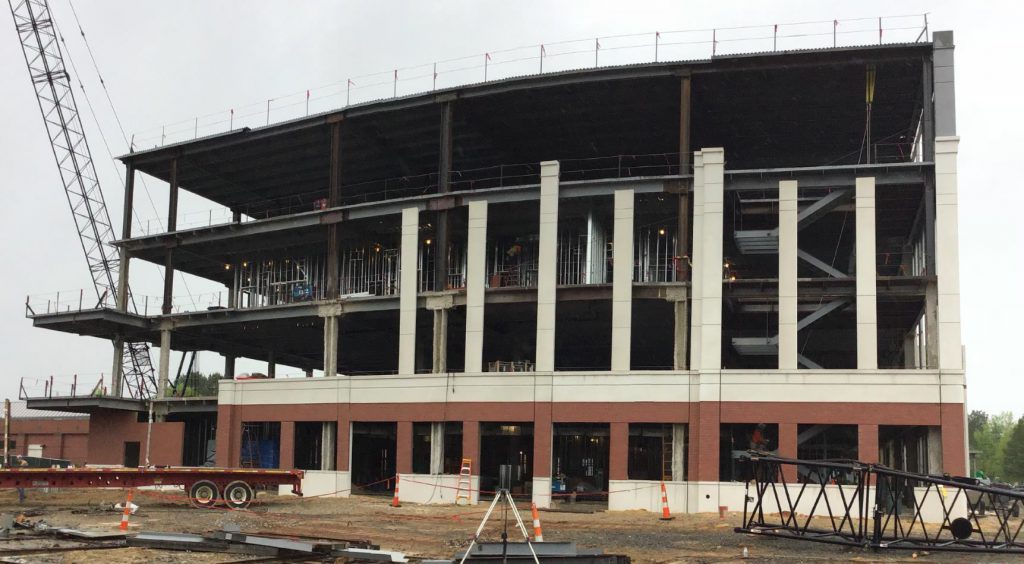
For appointments call
901-759-3111


